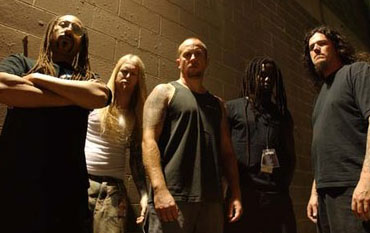
AC/DC – Black Ice: This has to be my pick of this batch. It lacks any pretense toward being anything but what it is, which is high octane rock music with a diverse set of influences on its lead guitar and total mastery of rhythm and songwriting. Each of these songs rolls off the mind as if buttered, lingering just long enough, composed to fit pentatonic scales but not in a brainless way. Melodies are mostly of the guitar nature because of the ashen-voice monotone in which they are mostly sung. The throbbing bass drives them, drumming keeps a pocket moving, and the rhythm riffs are inventive and topped by guitar that is more like a singing voice than fireworks, although it’s technically advanced. There’s a bit too much of three chord and turnaround songwriting formula for this to really endure in any meaningful sense, but for a band to be in the world this long and still so consistently listenable is impressive. No song will fully insult your intelligence although each will put it on hold, especially if you try to listen to the drunken babble that is the lyrics. AC/DC has gotten more Led Zeppelin over the years, with a few lifts here and there, and continues to incorporate a gnarly blues influence that reminds me of Eric Clapton working with punchier rhythms. Still, hard work shows in how well these pieces fit together like finely planed wood, and how each song keeps its mood with power and lacks any fat and confusion. There are not as many truly distinctive moments as there were on say, Back in Black, but none of these songs fade into the woodwork entirely either. Even if we pre-postmodern metalheads may not dig the motivations, one has to respect the craft at work here.

Disfear – Live the Storm: Motorhead with a D-beat and metalcore choruses and breakdowns, aspiring to the kind of melodic songwriting that made both Led Zeppelin and U2 household favorites. Unfortunately, the technique used reduce this to blurring noise interrupted by hookish choruses. Gone is the energetic punk of the past and now this band is falling into the worst habit of any act, which is to try to pander to your audience and so to incorporate enough of what has worked for others to drown out whatever might work for you. Vocals are underutilized, because this vocalist is clearly capable of some range and melody, but he’s afraid to open up and be sensitive in a meaningful way so we get the omnidirectional, pointless, nullifying Pantera-style rage. Musically this is derivative; artistically it is as hollow as corporate advertising. “Soul Scars” is a masterpiece. “Live the Storm” is a pretentious wannabe. Avoid.

Kataklysm – Prevail: this is pure chant cadence, repetition ad nauseam, with some death metal/hardcore hybrid riffs. Composition is stronger than most metalcore, but it’s also much simpler, which allows them to work out a couple really good riff patterns in interaction and then have the rest be something so repetitive it would even make Phil Anselmo nod off. It reminds me of Deicide’s “Once Upon the Cross” but even more sing-song, in a riot chorus kind of way. It’s not bad but I couldn’t listen to this. It’s like hearing someone each day come home from work and tell you exactly what went wrong, every single detail. First the copier was busted. Then I had to get paper from upstairs. Then I took a dump and it hurt. There were no sandwiches at lunch. It’s like a complaint anthem that pounds your head until you basically submit to apathy with a smile. same creepy mix of melodic and heavy chugging that alternates like linkin park between acoustic and distorted; really fucking basic.

Cynic – Traced in Air: When death metal was born, people said that death metal was incompetent musicianship and crass subject matter. The second generation of death metal, led by Pestilence and Atheist, tried to disprove that with technical music that incorporated the influences of progressive rock, jazz and classical. Since that time, progressive metal has become a big hit with people who want to think they’re musically educated. Most of it leans toward the jazz side, because this requires less of an ability to plan into the future and make a unique structure; you add a jam session to metal, which is easy and fun, so musicians love it and fans have something to be pompous about. “Traced in Air” plays into the worst of this tendency. Cynic has genericized themselves by pandering to an audience they know drools more over technicality than songwriting, and so have taken their technique from focus, mixed it up with generic jazz-prog-death, and have overplayed every single aspect of it so the CD is literally dripping with “prog moments” — but like a stew, the more stuff you toss in, the less distinctive the flavor is. We now have generic jazz prog-metal, complete with cliches. Drums are ridiculously overplayed; subtlety is dead, but you’ll spot that technique even if you’re dumb as a lichen. These musicians seem less interested in writing metal than in playing jazz under the guise of metal. You can hear the conversation now: “They went nuts over the last album, and now the market is finally huge! Let’s make it big with this next album, just make it jazzier and stuff it full of hot licks and drum fills.” I think people will listen to this for six weeks, then six months later be unsure when they stopped listening to it and why, yet not want to pick it up again. What a disappointment.

Speirling – The Piper: This reminds me of Ulver crossed with Satyricon with huge elements of a bombastic heavy metal doom metal hybrid like The Obsessed. Broad superstructure riffs crash into each other, recharging from their difference in conflict, and then drain to the ocean through a nice linear atmospheric riff. Repeat x 7. If you got into metal music so that you could find a way to dress up rock music as something rebellious, like a Priest in tranny French maid prostitute outfits, then this is great. Otherwise, why bother.

Apollyon Sun – Sub: Tom G. Warrior of Celtic Frost does Nine Inch Nails with an EBM/Industrial record that lets vocals guide its developments, which is a shame when contrasted to the power of industrial without a vocal lead, like Beherit’s Electric Doom Synthesis or Scorn’s “Evanescence.” As Warrior prepares to move past Celtic Frost and its triumphant return with Monotheist, his past work — this CD came out in 2000 — shows us much of where he might move. It’s much more rock, gothic and sleaze than Celtic Frost, more sardonic in melody, and the faster riff style is more triumphant and powerful. Above all else, it is catchy and follows modified pop and techno song structures, which means it’s both easy to remember and has a few surprises here and there. The vinegar vocals are less than listenable but not as terrible as much of Nine Inch Nails.

The Funeral Pyre – Wounds: Someone tries to resurrect classic At the Gates, but mixes in a little too much The Haunted. Melodic riffs reconnoiter after driving pure rhythm, a lot like Slaughter Lord, and the melodic riffs have more in common with “Slaughter of the Soul” or Niden Div 187 than early At the Gates. This gets a solid alright, especially for the periodic later Gorgoroth technique, but the melodies are too basic to really go anywhere. Lyrics sound like Dead Infection crossed with Neurosis, with DRI in the wings. It’s salady enough to be modern death/black, a/k/a metalcore. like The Abyss hybridized with Slaughter of the Soul, like Watain but better, still a lot of the indie/metalcore influence which makes it kind of simplistic.

Bilskirnir – Hyperborea: This is a very clever EP. Hybridize the Infernum style Iron Maiden/Graveland mix with the more Burzumy black metal clones, and you have something that sounds OK and bounces a long a lot like indie rock, not particularly distinguished unless the image, words or scene-significance gives you a reason to like it. If this is your first black metal, you will dig it, especially since it is very heavy metal. But over time, you will wonder why you bother.

Demonizer – Triumphator: So class, what’s black/death? Answer: when we run out of ideas, make speed metal and dress it up as black/death hybrid. I don’t see the point. Just make your Slayer/Metal Church tribute band and tell everyone you play fast because you love meth. This is like a simpler version of Sweden’s Merciless or Triumphator, with fast chromatic riffs leading into melodic chorus riffs. It’s pretty well done, actually, but in a style that makes even retarded kids bored after a few minutes. Clap your flippers and bob your heads.

Scott Kelly – The Wake: This Neurosis member also wants to make an acoustic album, and makes an intriguing one — is this a reference to Finnegans Wake, or just a wake? Because it sounds like one. Droning acoustic songs are blocky like hardcore, without much change or dynamic, but they plod on until they ingratiate themselves and have a primitive sincerity to them. The sensation is like the stunned moment after an impact when you’re not sure if your bones hurt or if the air around you is doing the hurting, and you just feel it. It will be interesting to see where he develops this style.

Devourment – 1.3.8: It’s hard not to like this at first because it is so relentlessly hookish in the weird way death metal bands lure you in with a cadence, and then make expectation of its fulfillment an ongoing necessary event in order to make sense of the otherwise overwhelming barrage of noise. Devourment switch between slow and chugging riffs and blasting mayhem religiously, downshifting with “breakdowns,” or deconstruction of a tempo by using internal attributes of a drum pattern to play off one another and slow it down, and upshifting with leaps in tempo that build up like a walk up stairs carrying a heavy automatic weapon. Much of it resembles the work of Suffocation, Malevolent Creation, Deicide, Deeds of Flesh and others who have worked within the percussive model of death metal, which inherits the palm-muted technique of speed metal and adds density of complexity. Here complexity and variation are necessary for this music to have staying power; its production is awful and tinny, and its songwriting is very similar between songs, which creates an onslaught of monolithic sound that few listeners will distinguish over time. Varying the technique and types of tempo changes would greatly improve this otherwise engaging, satisfyingly destructive band.

Agent Orange – Living in Darkness: Dug this out of the classics closet and have to say I like it. It’s melodic vocal punk like the Descendents, lots of bouncy stop-rhythms to guitar riffs and wandering, emo-style vocals that manage enough melody to keep themselves going. Would I listen to this stuff over Kraftwerk? No, but like the Descendents, the Minutemen, etc. it’s a part of the heritage of this music, and it’s a billion times better than punk now.

Diapsiquir – Virus S.T.N.: Say, what if Deathspell Omega were a lot simpler and incorporated the collage-of-garbage sound approach that WAR used? And maybe if they used lots of bouncy riffs and harmonized vocals? This sounds like a metal dog that has been kicked in the ribs singing how beautiful its death would be. Every clique and novelty possible has been employed to keep you from seeing that this band and this album slap themselves with limp wrists, gurgle and poo themselves.

Gridlink – Amber Gray: Containing ex-Discordance Axis personnel, this band aims to continue the fast-fingered assault of riffs that fit together like Tetris pieces and create a whole that, while like hardcore and grindcore is predictable in song structure, delivers the thrills with raw speed and dynamic phrase change like sigils flashing by in a mirror. Luckily this band has the wisdom to keep its work simple and to focus on what it does well, which is blasting slightly melodic versions of classic riffs. What I like about it is that it recalls the power violence and crossover music of the past which wanted to saturate us in insane energy as a motivic force, and with this CD, it works. Clocking in at 11 minutes it is nonetheless a full-length, albeit one that passes before you can recognize it. This CD has much more spirit than other CDs and while it claims to be grindcore, that’s grindcore like later Napalm Death with lots of metal influences in the formation of riffs and very punk song structures, except more jagged in this case which makes it tastier.

Shape of Despair – Shades Of…: Let’s make a Burzum clone but shape it into a doom band a lot like Skepticism, except even more entrenched in the vestiges of heavy metal? We’ll add a twist: play a rhythm lead, very simple, on a keyboard over the strobing riffs sound it sounds like a movie soundtrack to the proles. Fully competent, this band goes nowhere that Paradise Lost didn’t, and not only is less catchy, but depends on boring you into a stupor with Burzum-cum-Pelican drone technique that leaves most of us hoping to flatulate in harmony for variation. The most annoying parts are the rock rhythm, based on expectation like jazz or funk, so very bouncy and reliant upon us to care whether the returning rhythm catches the outgoing one. In fact, there are many good techniques throughout, but it’s basically verse-chorus music — with the simpleminded catchiness of a lullabye — that occasionally goes into extended overtime.

Equilibrium – Sagas: This album is simultaneously one of the better things I’ve heard this year, and one of the most completely ludicrous things I’ve heard. It vamps like a polka, bouncing with keyboards and guitars hitting together just before the beat, giving it a carnival atmosphere. Plenty of quality guitar work and overactive but competent keyboards, and songs with nice but very rock-ish two part melodic development, and hoarse death metal style vocals come together in a stew of confusion that has however very tasty bits. For strict songwriting assessment, this band is on par with later Iron Maiden and makes good songs. Aesthetically… if anyone heard me listening to this, I’d die of shame.

Soulfly – Conquer: This CD is Spinoza Ray Prozak musical hell. Every terrible idea in metal, recycled into a smoothly-written but directionless series of songs, has been offered up here in very loud production with a very angrily clueless vocalist. This is worse than shit. Feces at least decomposes in silence. Soulfly offer up generic Meshuggah/Pantera angry bounce-riffing, where any single impact is doubled so you expect its syncopated response, and the band hopes the catchy vocal ranting and bounce will lead you to care what happens next. It is battering, not heavy. It is a mile wide and an inch deep, with production that clearly cost a ton of money. I thought the whole idea of being revolutionaries was to be DIY and have the truth on your side. This album is propaganda for (a) Cavalera’s politics and (b) a vapid distillation of speed metal, death metal and punk hardcore into the most generic form of pointless angry music you can imagine. I use this CD to drive rats out of the attic but only the smarter rats leave.

Fullmoon – United Aryan Evil: While I generally detest neo-Nazi bands on principle, just like I refuse to listen to boilerplate leftist propaganda like The Dead Kennedys, looking for good metal these days means you run into bands who interpret the Romanticist Nationalism inherent to all good black metal as a narrow political ideal. It’s not much different than how punk bands translate being against mechanistic society into braindead liberalism. It’s hard to hate this band, but equally hard to listen again. They make paint-by-the-numbers melodic droning NSBM, and then interrupt it with slower melodic transitions, but the repetition waxes painful and the technique is a clearly lifted hybrid of Darkthrone, Graveland and Burzum. It reminds me of music for children, except that this tries to sound as deliberately blown out as possible, which with the tools available at this point is an obvious contrivance like Ulver’s “Nattens Madrigal.” When your best riffs sound like Burzum classics with one or two notes changed, something else must be done.
2 Comments














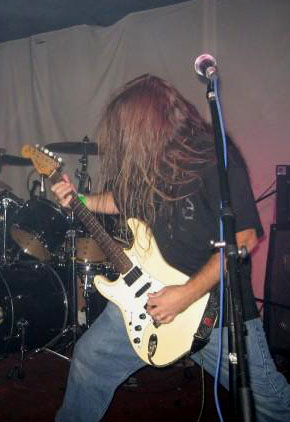 Coya was billed on the flier for this show, but were replaced by Opia, who were already on stage at 9 pm when I arrived. They consisted of a drummer/vocalist and a guitarist. I quite admired this, because it is not easy to get up in front of a mostly empty room to play with such a sparse line up. I’ve also always been impressed with drummers who managed to be a main vocalist. They played solid, minimalist speed metal. After a couple songs, the guitarist took the microphone from the drummer and performed the vocals for the next song. For the following song, they switched instruments completely, with the drummer resuming vocals while taking on guitar duties, and the guitarist taking on the drums. This rare display of musicianship reinforced the raging wall of sound they were producing.
Coya was billed on the flier for this show, but were replaced by Opia, who were already on stage at 9 pm when I arrived. They consisted of a drummer/vocalist and a guitarist. I quite admired this, because it is not easy to get up in front of a mostly empty room to play with such a sparse line up. I’ve also always been impressed with drummers who managed to be a main vocalist. They played solid, minimalist speed metal. After a couple songs, the guitarist took the microphone from the drummer and performed the vocals for the next song. For the following song, they switched instruments completely, with the drummer resuming vocals while taking on guitar duties, and the guitarist taking on the drums. This rare display of musicianship reinforced the raging wall of sound they were producing.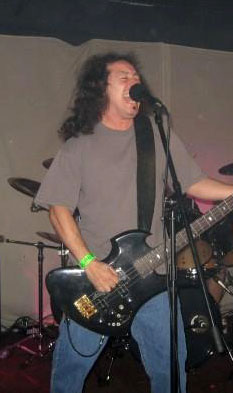 Finally, Insecticide emerged, and all hell broke loose. Playing classic crossover thrash reminiscent of later COC colliding with Dead Brain Cells with Cryptic Slaughter on retainer, Insecticide incited the crowd into a frenzy. The crowd changed completely in the 15 minutes between Temple of Wrath leaving the stage and Insecticide taking it. Although fewer people were present, this was a different audience that was left over, a more deliberate and experienced cross-section of the metal crowd. There was more movement for this band alone than all four preceding bands combined.
Finally, Insecticide emerged, and all hell broke loose. Playing classic crossover thrash reminiscent of later COC colliding with Dead Brain Cells with Cryptic Slaughter on retainer, Insecticide incited the crowd into a frenzy. The crowd changed completely in the 15 minutes between Temple of Wrath leaving the stage and Insecticide taking it. Although fewer people were present, this was a different audience that was left over, a more deliberate and experienced cross-section of the metal crowd. There was more movement for this band alone than all four preceding bands combined.














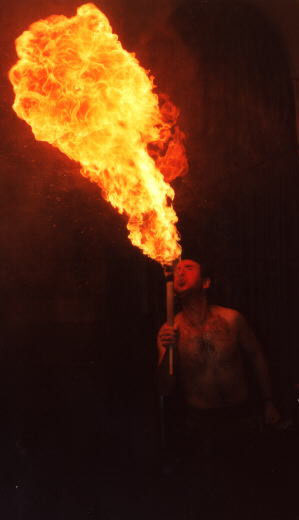 BLOOD lyrics are more like stories, using metaphor, or are insights into psychological and religious topics instead of political topics; why did you take this approach?
BLOOD lyrics are more like stories, using metaphor, or are insights into psychological and religious topics instead of political topics; why did you take this approach?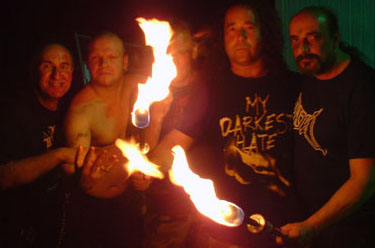
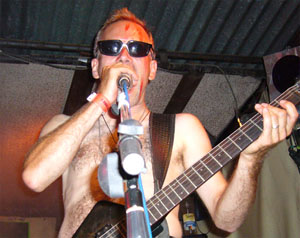 Dysangelium was released in 2003, and in 2007, Impulse to Destroy got re-released. What’s next for BLOOD? Are you going to tour Texas ever?
Dysangelium was released in 2003, and in 2007, Impulse to Destroy got re-released. What’s next for BLOOD? Are you going to tour Texas ever? No one has or will create death metal like Suffocation. Taking the muffled hard-stop strumming of speed metal, mixing it in with the structural cryptograms of death metal, and amplifying the intensity, Suffocation innovative the percussive death metal that spawned the goregrind genre and countless imitators. Drummer Mike Smith was kind enough to give us an interview on the state of the band and its future.
No one has or will create death metal like Suffocation. Taking the muffled hard-stop strumming of speed metal, mixing it in with the structural cryptograms of death metal, and amplifying the intensity, Suffocation innovative the percussive death metal that spawned the goregrind genre and countless imitators. Drummer Mike Smith was kind enough to give us an interview on the state of the band and its future.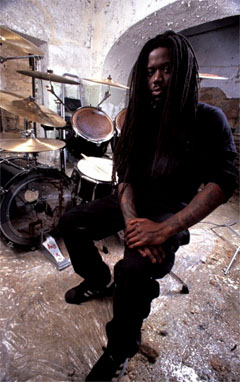 In the Effigy of the Forgotten group photo, a Morpheus (now Morpheus Descends) tshirt is visible. Did this band influence your style?
In the Effigy of the Forgotten group photo, a Morpheus (now Morpheus Descends) tshirt is visible. Did this band influence your style?